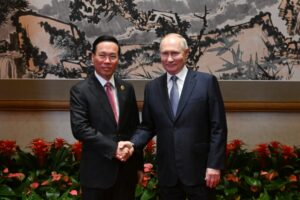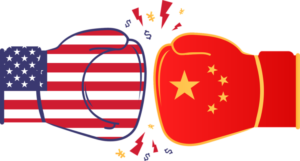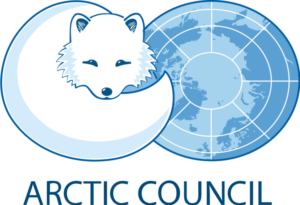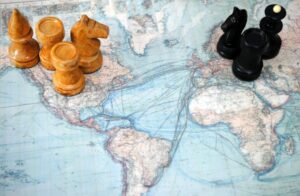The North Atlantic Treaty Organization (NATO) is increasingly playing a role in mediating the conflicts between Russia and Ukraine, reaffirming its importance in geopolitical conflicts within Europe and its neighbourhood.
Russian President Vladimir Putin has a major objective of decreasing the participation of the West in Europe, mainly of the United States and thus remake its sphere of influence in it. But NATO is becoming increasingly essential in the defense of its members and allies, so much so that the worsening threats and tensions of the Russian advance are increasing the interest of new alliances to the Organization.
After a period of falling protagonism, since the fall of the Berlin Wall, NATO was still finding its role in the geopolitical scenario. Paul Taylor analyzed at Politico the relations between NATO, its resurgence and Russian conflicts:
“The net result of Russia’s threatening behavior will clearly be to increase the NATO military footprint in Moscow’s former Eastern European satellites, not to remove Western forces from those countries as Putin has demanded.”
Paul Taylor, Politico

What is the NATO
Created in 1949, a North Atlantic Treaty Organization is an alliance of several Western countries such as: Belgium, Canada, United States (leader of the fact of the Treaty), France, Italy, Luxembourg, Norway, the Netherlands, Portugal, the United Kingdom and 20 other Member States.
Its main goal of creation was a mutual defense alliance between member countries. It was in the Cold War that its principles were really being refined, and with the fall of the Berlin Wall it made its first military intervention in Bosnia in 1992.
The alliance fundamentals are given in four specific objectives:
- A political and military alliance
- Political: “NATO promotes democratic values and enables members to consult and cooperate on defence and security-related issues to solve problems, build trust and, in the long run, prevent conflict.”
- Military: “NATO is committed to the peaceful resolution of disputes. If diplomatic efforts fail, it has the military power to undertake crisis-management operations. These are carried out under the collective defence clause of NATO’s founding treaty – Article 5 of the Washington Treaty […]”
- Collective Defence
- “NATO is committed to the principle that an attack against one or several of its members is considered as an attack against all. This is the principle of collective defence, which is enshrined in Article 5 of the Washington Treaty. So far, Article 5 has been invoked once – in response to the 9/11 terrorist attacks in the United States in 2001.”
- The Transatlantic Link
- “NATO is an alliance of countries from Europe and North America. It provides a unique link between these two continents, enabling them to consult and cooperate in the field of defence and security, and conduct multinational crisis-management operations together.”
- The 2010 Strategic Concept
- “Strategic Concepts lay down the Alliance’s core tasks and principles, its values, the evolving security environment and the Alliance’s strategic objectives for the next decade. The 2010 Strategic Concept defines NATO’s cores tasks as: collective defence, crisis-management and cooperative security.”
The main value of participating in NATO is the commitment to the mutual defense of Article 4°and 5°, which ensures the freedom of national sovereignty of states and that all must commit themselves to protecting their allies if they are under threat.
Why NATO was weakening and without a “mission”
NATO partly supported the United States in its “War on Terror,” mainly in the Afghanistan but also in other conflicts as in Libya. However, these participations in different conflicts was far from NATO’s original mission to defend the West against the expansion of Communism via the Soviet Union.
For example, in November 2019 the French President Emmanuel Macron declared that NATO was going through a “brain death” and that the European Union had to strengthen militarily independent of NATO in its strategic autonomy of defense.
“Let’s face it. You have partners in the same geographical area and you don’t have any coordination on strategic decision-making from the United States with NATO partners,” he [Macron] added, apparently referring to the U.S. pullout from Syria and Turkey’s recent invasion of the same country.
Politico
NATO’s military commitments were being used mainly for the interests of the United States, in its missions and in its objectives, which were sometimes not the same as those of the other member states.
The Alliance was not being used in its essential fundamentals, but rather as a commercial bridge and a form of stable compromise between countries. The realization of this commitment was not being carried out, and so NATO was decreasing its protagonism on defense issues.
Trump sees NATO “as a commercial project,” Macron said. “For him it’s a project where the U.S. provide a geopolitical umbrella but in exchange, they want commercial exclusivity, it’s a reason to buy American. France hasn’t signed for this.”
Politico
After being seen as “Brain Dead” by Macron, NATO is reborn thanks to Putin
After the conflicts worsened and with increasing tension between Russia and Ukraine, in recent months, NATO began to build a “new mission” and role.
The Kremlin is very explicit with regard to its thoughts on the US-led NATO advance and the European Union on the Eastern flank. With the aim of reestablishing relations with the former socialist republics, Putin is currently in search of the strengthening of the Russian sphere of influence.
However, these former satellite countries that are under threat of Russian advance feel the vulnerability of the moment they find themselves. With this, the participation as a member of NATO as a military and political alliance gained value again and countries returned to seek commitment to the alliance.
Since the annexation of Crimea in 2014, Putin has demonstrated the military power that Russia had been building.
At the same time, the United States was focusing more on opposition that China symbolizes the nation and the European Union was in search of a greater strategic autonomy. But the steps that Russia is taking in Europe have rekindled the need for the mutual defence services that NATO provides.
At this time, not only NATO’s ties with European countries deepened, but also the most active participation of the US in the region.
For example, only in January 2022, several news reports showed the strengthening of NATO with the commitment of its members and allies:
- Sweden and Finland, which are part of the EU but not of NATO, felt the russian threat and reaffirmed their freedom if they want to join NATO in the near future;
- Spain sent a frigate to the Black Sea;
- the United Kingdom sent more troops to the Baltic countries and Poland;
- France undertook to send troops to Romania if necessary;
- Denmark sent F16 fighters and the Netherlands F35 fighters to the eastern flank of Europe;
- The United States left 8,500 troops on alert to be sent to the region in case of conflict.
In other words, Putin’s great goal of decreasing American hegemony in Eastern Europe backfired, since the presence of NATO in the former Soviet states will not be milder but will follow the tactics of the Cold War again: “forward and defense”.
As well placed by Paul Taylor for Politico: “Putin may carry a big bazooka, but it seems to be aimed at his own foot. “





















[…] looks like we can again expect the opposite. NATO is stronger and more united than ever thanks to the Russian threats and the Ukrainian invasion. All 30 of its members have again committed to “article 5” of collective defense where “an […]
[…] set of states defines an attack, or a cyber attack; for example, if in the case of Estonia in 2007 NATO had stated that an act of war had occurred (which did not occur). Unilaterality, on the other hand, […]
[…] the tensions between NATO and Russia (more specifically with Putin) are even more delicate after the invasion of Ukraine. […]